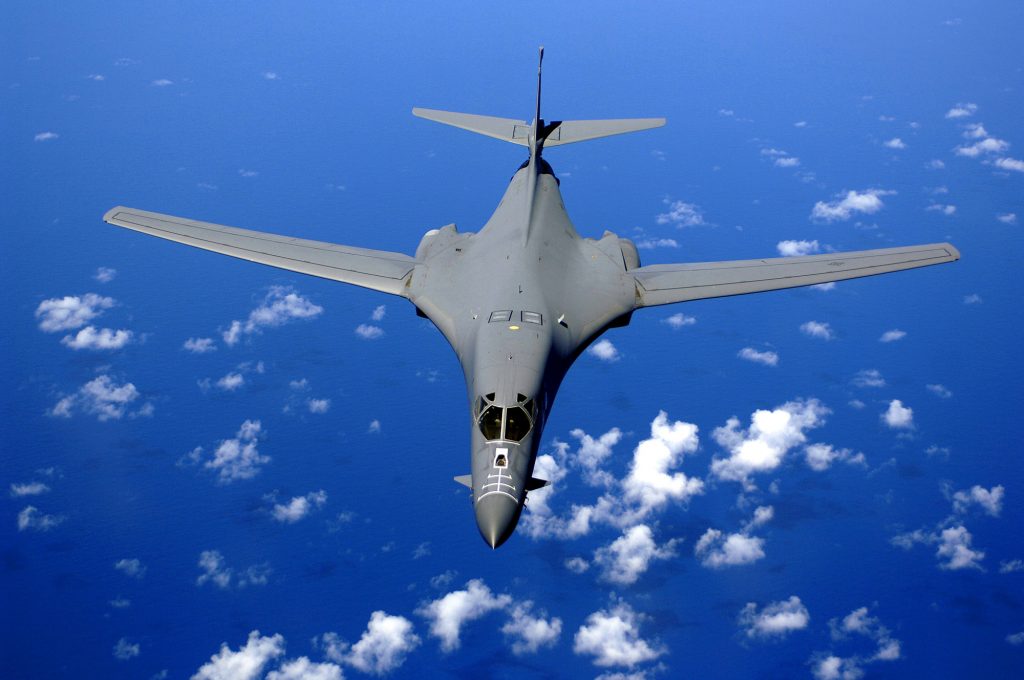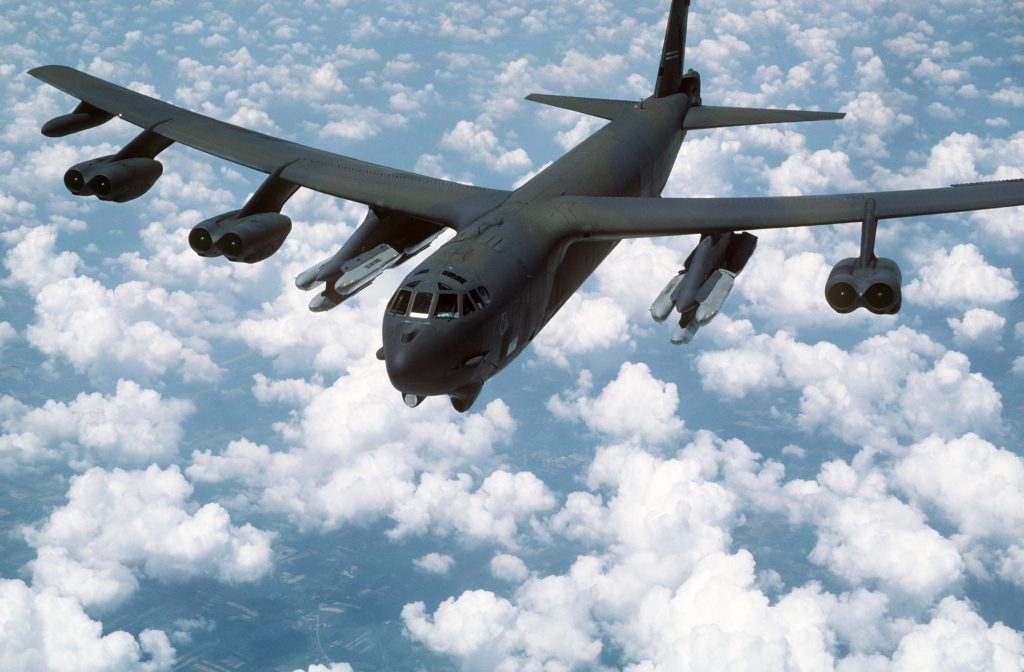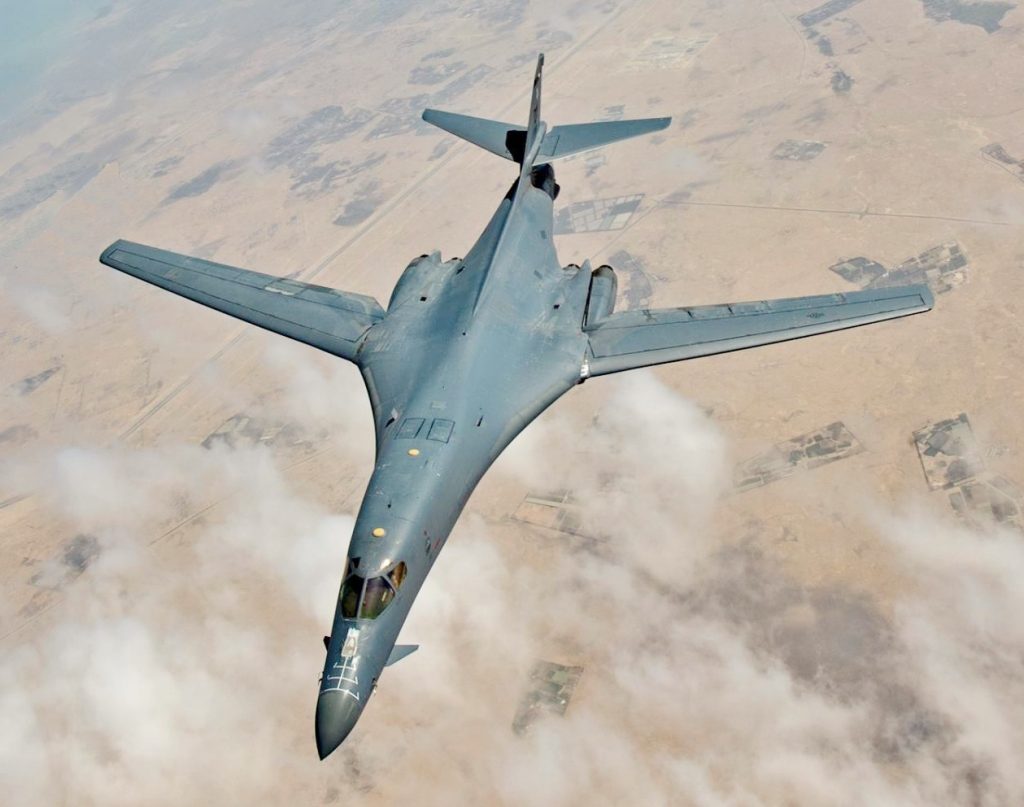
The B-1 Bomber went into Air Force service 35 years ago today. The sleek bird was designed to replace the B-52. This is its story
The Beginnings

As of the late 1970s, the B52 Stratofortress was American’s primary long-range bomber. Its primary mission was to be one of the three legs of America’s strategic triad [Intercontinental Ballistic Missiles (ICBMs), Sea Launched Ballistic Missiles (from nuclear subs), and manned bombers (the B-52)]. The three-legged defense was designed to discourage the Soviet Union from launching a nuclear strike on the United States. The popular thought being that any enemy would realize their inability to take out all three legs of the triad—therefore discouraging a first strike.
The B-52 was developed by Boeing in the 1950s. By the late 1970s it was referred to as the “Aging B-52”. Replacements were considered. The most notable was the XB-70. Two such aircraft were built, but the program was cancelled when advances in Soviet Surface to Air Missile technology rendered the XB-70 obsolete before it could be produced.
The B-1A

By the early 1970s, the B-1 bomber was proposed to replace the B-52. It was to fly faster than Mach 2. Then on June 30, 1977, President Jimmy Carter cancelled the B-1. Critics charge that Carter was loathed to spend on defense, a criticism that is validated by the spare parts available during his administration. Proponents claim that Carter knew of the classified Stealth technology being developed and wanted to wait for it to ripen. Additionally Carter ordered the production of Air Launch Cruise Missiles which could be fired from B-52s.
Whatever the true reason(s) Ronald Reagan made the B-1 one of the centerpieces of his campaign against sitting President Carter in 1980. When Reagan won the election by a landslide, he made good on his campaign promise. The plane would be produced. Modifications changed the original design so much so that Carter’s B-1A became Reagan’s B-1B.
The B-1B
Testing and production began nearly simultaneously, and the first bird rolled out of the Rockwell International Plant in Palmdale, California in 1983.

I was fortunate to be among the first air refueling tankers from an operational unit to refuel the B-1 at Edwards. As we glided in the across the glazed blue sky high over the caprock of Edwards a B-1 parked in pre-contact position behind the Mighty KC-135. I could hear the excitement in our boom operator’s young voice. He cleared him in for contact and the fuel began to flow. As I recall he did take a lot of fuel. Likely the pilots wanted to get practice getting their A/R (air refueling) contacts.
When the B-1 dropped off the Boom for the last time and descended toward the desert floor, I remember how sheik she looked down below us. If the B-52 is like a big sea gull, the B-1 hearkens to a Canadian Snow Goose in Flight. The swept wings are beautiful.

I was excited, I had refueled many a B-52, but this was my first B-1 and my crewmates (Mike, Dorothy, John) and I claimed our B-1 Test Team Patch back at Base Ops
The Rest of the Story
Unlike the B-52, the B-1 has supersonic capability topping out at over Mach 1.2. The four engines are equipped with afterburners, which helps. Randy and my other friends who have flown the B-1, affectionately called it “The Bone”

Due to the rush to get the B-1 into production, testing was not as measured as desired. This caused several initial problems with the jet. I remember an episode when General Bennie Davis was ready to receive the B-1, and engine parts dropped out causing the plane FOD damage from itself.
But to his credit, Bennie Davis was one of the biggest supporters of the B-1. The first one arrived at Dyess 35 years ago today. An excellent article on that day can be found at This Day in Aviation. All in all, 100 B-1s were produced and over 60 are still active, nearly the same as the “Aging B-52”.
That led to the joke in Strategic Air Command in the late 80s. Question: What is the follow-on bomber to the B-1? Answer: The B-52H.
